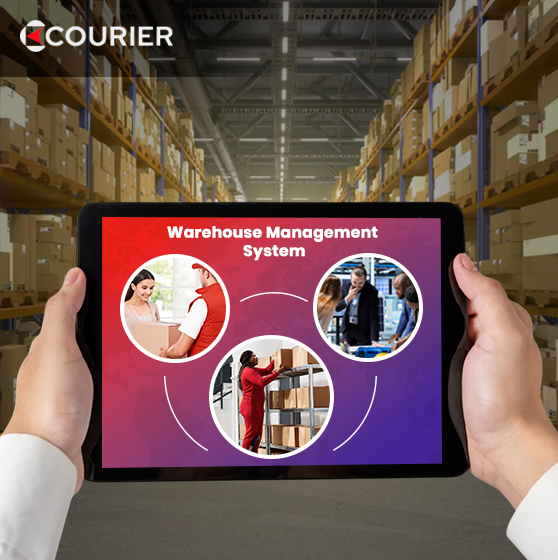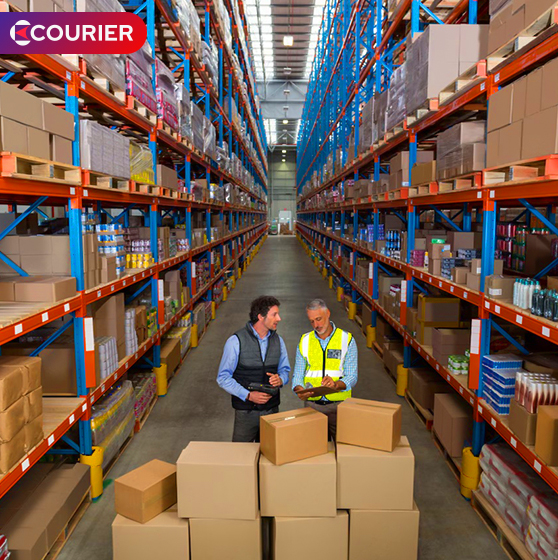
If you’re in the distribution or supply business, the struggles of managing warehouse costs are obvious. The problems are well-known: pallets overload, wasted space, and rising expenses.
Coping with the associated prices becomes a burden when there are no savings. Every day, you juggle higher labor charges, tighter margins, and packaging issues. There’s also the concern that your inventory may spoil when stored for extended periods. Even the target of delivering orders at the right place and time seems a hassle.
At the end, you start to find the process exhausting and frustrating, with no way out. But what if you can change your agony into a systematic order management?
Bulk pallet storage offers a smart setup for managing warehouse requirements. It offers a brilliant way of maximizing space and optimizing operations. By switching to a better facility, you can make significant cost savings in the warehouse.
If you’re seeking a better alternative to your traditional storage strategy, you are in the right place. In this blog, we will discuss how to reduce warehouse charges through bulk pallet storage solutions.
Table of Contents
Factors That Affect Warehouse Costing
To reduce inventory budgets in your warehouse, you first need to understand the associated expenses.
Warehousing costs are the funds associated with managing and storing goods in the facility. Since the distribution center is the backbone of the operation, managing the expenditures can impact your efficiency and profitability.
Every storage facility faces a combination of visible and hidden charges that can escalate rapidly. Hence, if you can identify the areas of improvement, you will have better control over the storage unit.
1. Labor Cost
These expenses increase when operations aren’t efficient. When you hire staff to manage the goods, you have to take care of their payment. If there is more staff, there will be a greater chance of mismanagement. For instance, searching for misplaced inventory will cause extra overhead. Incompetent workflows mean paying people to work harder, not smarter.
2. Space Utilization
It is the heart of the pricing issues. If your layout creates pointless aisles or avoids vertical space, you’re wasting your resources. You pay premium rates for disorganized items and space. Poor planning results in higher rent for stored items. There will be lower chances of maximizing capacity, leading to failed opportunities.
3. Rent or Lease
Renting a space is an essential expense in businesses. The cost is directly associated with area, size, localities, and amenities. You are also paying for the costs associated with lighting, heating, and cooling.
4. Equipment Charges
This includes the expenses related to managing the equipment for storing, moving, and adding inventory. Depreciation outlays, such as fuel, repairs, and electricity, also fall under it.
5. Security
Charges associated with safeguarding the facility and its content fall under security. You need to invest in surveillance cameras, alarm systems, and access control systems. These ensure compliance and deter theft.
6. Taxes
Warehouses charge taxes and fees based on the goods stored. This helps comply with the regulations and standards set by the government. Payment of property tax is mandatory for every warehouse owner.
7. Technology
To keep the warehouses running smoothly, you need to invest in technology. You need to cover the upfront costs for software licenses, updates, and installation. There are also added charges like maintenance and training. The prices can vary depending on the size of the operation, automation level, and the software model.
8. Transportation
If your work model involves transporting goods from facilities, there will be transportation expenses. For instance, you have to take care of the product shipping and receiving.
How to Calculate Warehouse Costs?
Warehouse expenses can change when the system isn’t managed properly. When you start calculating the costs, managing the budget becomes easier. Begin by determining the basic measurements and space requirements to reduce expenses.
Getting an accurate idea of the associated charges requires in-depth evaluation and calculated plans. This analysis helps determine whether bulk pallet storage or facility changes are the best options.
1. Space/ Area Size
Start by measuring your warehouse space. The square footage will give an exact idea of the storage capacity. You can check the cost per unit. Remember to add the rent charges and the additional fees to determine the exact expense.
The formula to calculate cost per square foot is- Total Annual Rent Cost / Total Warehouse Square Footage.
2. Cost Per Unit of Measurement
To calculate the expenses per unit, start by determining the cost per pallet stored. You also need to find the cost per square foot and cost per unit handled.
They will reveal where the money is being spent and help locate the areas for cost-cutting. When you identify the key aspects impacting the current setup, finding solutions becomes easier.
3. Maintenance Costs
Check the prices associated with managing the inventory. You have to evaluate the purchase and depreciation factors of equipment/ goods. This will reveal how much the units cost when stored for the long term. The formula for calculating inventory expenses is: Good/Equipment cost per order = Total Cost/Total Order Processed.
4. Energy Expenses
To sustain the items for a longer time, you have spent funds on devices. They consume a significant amount of electricity. Warehouse proportions, climate control requirements, and working hours will determine energy charges.
The formula to calculate energy cost per square foot is- Energy cost per sq. ft. = Total Annual Energy Cost / Total Warehouse Square Footage.
5. Operational and Labor Overheads
Labor costs are the most expensive aspect of warehouse management. You have to take care of the wages, training, taxes, and overtime. If you have a large stock, constant hiring becomes a necessity. Turnover and training costs also strain the budget.
The formula to calculate the cost per labor hour is- Cost per labor hour = Total Warehouse Labor Cost / Total Hours Worked.
6. Transportation and Shipping
Transportation charges depend on several factors, including fuel price, climate, and delivery distance. Shipment value and carrier rates also impact the transportation expenses.
Finding the correct value will help in reducing logistics outlays. The right formula to calculate cost per shipment is- Cost per shipment = Total Shipping Expenses / Total Orders Shipped.
What is Bulk Pallet Storage?
By now, you should be familiar with the correct method for calculating warehouse expenditures. You also understand that improper use of storage space can result in financial waste. This is where bulk pallet storage can be helpful. It helps maximize density and minimize wasted space.
You can transform your disoriented inventory into organized and high-density blocks. It offers a cost-effective solution for managing extensive inventories without the need for additional shelves or storage units.
Through this method, you can achieve price reduction in warehouse operations. Bulk pallet storage uses methodical approaches to stack and arrange pallets. You can stack compatible pallets on warehouse floors or aisles in organized blocks.
This is perfect for uniform goods that are easy to stack and don’t require urgent access. It helps achieve 85-95% space utilization by maximizing vertical stacking and removing unnecessary aisles.
How Bulk Pallet Storage Reduces Warehouse Costs?
If you’re continually seeking ways to reduce warehouse costs, it’s time to consider bulk pallet storage solutions. It provides a systematic approach to organizing bulk goods in the warehouse.
Your monthly expenses will decrease when you purchase goods in bulk and store them for an extended period. This is due to a decrease in unit charges and other long-term logistical efficiencies. The overall profits will start reflecting as you handle warehouse cost management better.
1. Improved storage
Bulk pallet storage solutions help to make the most out of the space. This factor delivers immediate savings on rent. When you can store a larger number of pallets in the same space, your price per pallet drops. This improvement often reduces the need for additional warehouse spaces.
2. Reduced Time
When you have a systematic storage unit, your operational overheads reduce. Bulk storage minimizes the time spent on moving items from individual pallets. There’s no need to navigate racks or search for items. Forklift operators can move multiple pallets at a time. This reduces the time needed for placing goods on the shelf consecutively.
3. Decreased Utility Expenses
With bulk storage, you can also reduce the utility expenses. Since there are no concentrated storage areas, you don’t require multiple lighting units. When inventory occupies a dense space, only the specific section will need cooling or heating. Some facilities can operate sustainably, thereby reducing the utility bills further.
4. Lower Equipment Needs
You can save on rental and maintenance costs with bulk storage. The unit only needs specialized forklifts to function. Bulk storage doesn’t have complex racking systems, thereby reducing the need for material handling equipment.
Since the operation becomes simpler, you won’t need a new machine. Lower equipment purchase costs mean less maintenance and fewer replacements.
5. Better Inventory
Organized pallet blocks reduce loss and damage. A systematic inventory makes tracking products convenient. You can count stocks and quickly identify any issues. When the items stay organized, you have smoother operations, lower decline, and reduced damage claims.
6. Faster loading and Unloading
If you are looking for cost reduction ideas in logistics, choosing bulk pallet storage can be a wise choice. The solution reduces your docking charges and speeds up the trucks’ turnaround time.
When the blocks are correctly arranged, loading trucks becomes hassle-free. This again reduces labor expenses and time per shipment.
Advantages of Switching Warehouses for Bulk Pallet Storage
Modern businesses are always on the lookout for ways to optimize processes and reduce unwanted costs. This leads to higher profits and sustainable growth. If you’re looking for ways to reduce costs in the warehouse, consider switching to an innovative method: bulk pallet storage.
It helps boost operational efficiency, increase space use, and decrease expenses. This shift involves transforming from storing goods on floors or basic shelving to stacking pallets vertically.
By storing goods in the designated lanes, you make the best use of the spacing.
You can make faster and more reliable deliveries as the goods are easy to locate. At the same time, streamlined planning will enhance the competitiveness and profitability of the business.
Here are some benefits you can get by switching to bulk storage pallet systems.
1. Faster handling
Bulk storage lets you create pallets for easy relocation. You can load and unload goods with forklifts and pallet jacks efficiently. This reduces your turnaround time drastically.
2. Good Organization and Tracking
Bulk storage helps in better inventory management by keeping products labeled. Integrating it with a warehouse management system will allow real-time tracking. Moreover, you can reduce errors and complete the fulfillment process better.
3. Better Workflow
The structured form of pallet storage creates an organized workflow. You can categorize products based on their size and form. Pallet storage enables you to replenish products according to the turnover rate. This reduces the time spent on locating products.
4. Lowers Facility Overhead
By keeping goods in the vertical space, you can reduce the need for expansion. This again contributes to higher savings. By switching to bulk storage, you will save funds on property leasing, taxes, utilities, and maintenance. Moreover, you can reduce storage costs significantly.
5. Lower Shipping Cost
By keeping the goods in a block form, you can ship a large volume at a time. This will help you save on fuel and transportation fees.
Practical Ways to Reduce Warehouse Costs
Beyond storage system changes, there are multiple strategies to reduce warehouse operational expenses. The proper management of a warehouse is the key to streamlining your supply chain.
It will help enhance customer experience, inventory profitability, and process optimization. Here are some warehouse cost reduction techniques for a better workflow.
- Data-Driven Tactic: You can optimize inventory by using data-driven approaches. This will prevent dead inventory and overstocking. Better demand forecasting helps eliminate excess goods that consume warehouse space.
- Automate Inventory Tracking – With an automated inventory, tracking logistics becomes easier. You have tools like barcoding and RFID technology to understand the demand and supply. Automation further minimizes labor expenses and offers real-time data about inventory. This is a smart strategy for warehouse cost reduction.
- Standardize Packaging– Maintaining good packaging helps in efficient stacking and space utilization. When products use a uniform structure, bulk storage becomes smoother.
- Slotting Methods– One of the best warehouse cost reduction ideas is slotting. In this method, you categorize products based on demand. Arranging them according to locations also reduces picking time and labor charges.
- Negotiating Volume Discounts – Negotiating with suppliers to reduce inbound freight expenses can help save significant costs. Larger deliveries work well with bulk storage systems.
- Seasonal Storage– Keeping a bulk storage during peak seasons can be more cost-effective. It is better to develop strategies that adjust warehouse capacity in response to demand patterns.
- Energy-saving Measures – Implementing energy-saving measures in the warehouses will help reduce electricity costs. LED lighting and motion sensors help save energy. These integrations help reduce utility costs and promote sustainability.
Save Your Expenses in a Better Way with Bulk Pallet Storage
Still wondering- How to Reduce Warehouse Costs? For a systematic operation and budget-friendly outputs, switch to bulk pallet storage.
Warehouse price control doesn’t need to be a struggle. Bulk pallet storage provides a systematic path to savings, especially for businesses having extensive inventories over extended periods.
By increasing the storage density and relocating to better facilities, you can improve your business’s cost structure and profitability. With Courier Platforms, you can successfully make these changes. We offer expert bulk storage and pallet delivery services to minimize transit time.
At Courier Platforms, we have a well-planned warehouse for your bulk storage and last-mile delivery needs. With our help, you can optimize your supply chain and cut warehouse transfer costs.
The best part is that you make substantial savings on monthly expenses by keeping your goods at our bulk storage facility for the long term.
So, take the step towards a better workflow with our bulk pallet storage solutions!
Recent Posts





 25th September , 2025
25th September , 2025 





